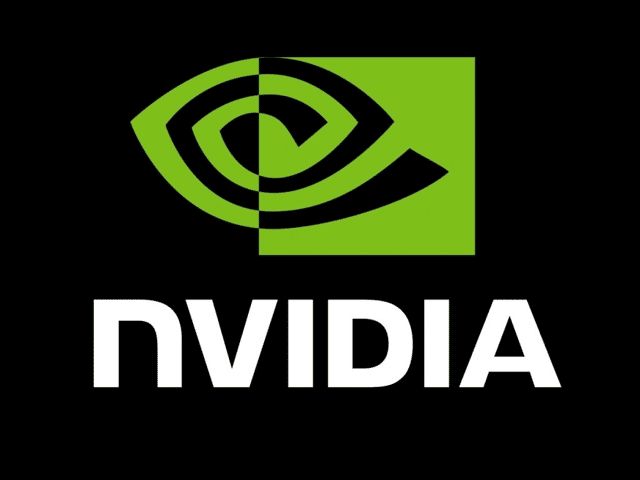Earlier this week, NVIDIA Corporation (NVDA - Get Rating) shares began trading at a new price following a 10-for-1 stock split. This adjustment brought the share price down from more than $1,200 last week (at the previous Friday’s close) to closing the last trading session at $125.20, making the stock more accessible to a wider range of investors.
Shareholders who owned NVDA stock as of Thursday’s market close saw their holdings multiplied, receiving ten shares for each one they previously held. For instance, an investor with ten shares now holds 100 shares.
Stock splits lower the price per share, making them more affordable for investors, while the total value of shareholders’ investments remains unchanged. These splits are often seen as a positive signal, reflecting the management’s confidence in the company’s future prospects.
Following the footsteps of Alphabet Inc. (GOOGL - Get Rating), Amazon.com, Inc. (AMZN - Get Rating), and Tesla, Inc. (TSLA - Get Rating), NVDA became the fourth member of the ‘Magnificent 7‘ to implement a stock split over the past few years. The chip giant’s 10-for-1 stock split comes after a significant surge in its share price, which has increased by 222.9% over the past year and 177.1% year-to-date.
Several market participants are optimistic that the lower share price resulting from the stock split could enhance the company’s stock liquidity and contribute to sustaining its impressive upward trajectory. However, it’s crucial to understand that stock splits are mechanical adjustments made to adjust share prices and increase affordability for investors.
While they can improve liquidity by attracting more trading volume, they generally do not directly act as catalysts to drive share price performance. Instead, here’s what could influence the performance of NVDA in the upcoming months:
Strong Financials
For the first quarter that ended April 28, 2024, Nvidia’s revenue increased threefold year-over-year to $26.04 billion, a new record level. NVDA’s Data Center Group (primarily connected to its AI operations) generated $22.60 billion in revenue, resulting in a 23% sequential gain and a massive 427% rise over the same period last year.
The company’s gross profit improved by 339% year-over-year to $20.41 billion, while its operating income surged 690% from the year-ago value to $16.91 billion. NVDA’s non-GAAP net income amounted to $15.24 billion or $6.12 per share, compared to $2.71 billion or $1.09 per share in the previous year’s quarter, respectively.
As of April 28, 2024, its cash, cash equivalents and marketable securities stood at $31.44 billion, up 20.9% from $25.98 billion on January 28, 2024. Additionally, the company reported a free cash flow of $14.94 billion compared to $2.71 billion in the prior year’s quarter.
Favorable Analyst Estimates
Analysts expect NVDA’s revenue for the fiscal 2025 second quarter (ending July 2024) to increase by 109.8% year-over-year to $28.34 billion. The consensus EPS estimate of $0.63 for the current quarter indicates a 134.9% improvement year-over-year. Moreover, the company has an excellent earnings surprise history, surpassing the consensus EPS estimates in each of the trailing four quarters.
For the fiscal year ending January 2025, the company’s EPS is anticipated to grow 109.1% year-over-year to $2.71, while its revenue is expected to increase 96.9% from the prior year period to $119.98 billion.
Premium Valuation
In terms of forward non-GAAP P/E, NVDA is trading at 44.62x, 87.2% higher than the industry average of 23.84x. Similarly, its forward EV/EBITDA multiple of 38.37 is 163.6% above the industry average of 14.55.
In addition, the stock’s forward EV/EBIT and Price/Cash Flow of 37.04x and 47.21x are 79.5% and 101.2% higher than the industry averages of 20.64x and 23.47x, respectively. NVDA’s forward EV/Sales multiple of 24.60 compares to the industry average of 2.93.
Higher-than-Industry Profitability
NVDA’s 75.29% trailing-12-month gross profit margin is 50.2% higher than the 50.14% industry average. Similarly, the stock’s 36.38% trailing-12-month levered FCF margin is 257.7% higher than the 10.17% industry average.
In addition, its trailing-12-month net income margin of 53.40% is favorably higher than the 2.67% industry average. Furthermore, the stock’s ROCE, ROTC, and ROTA of 115.66%, 61.54%, and 55.27% compares to the industry averages of 3.97%, 2.67%, and 1.55%, respectively.
POWR Ratings Exhibit Mixed Prospects
NVDA’s stance is apparent in its POWR Ratings. The stock has an overall rating of C, which translates to Neutral in our proprietary rating system. The POWR Ratings are calculated by taking into account 118 different factors, with each factor weighted to an optimal degree.
Our proprietary rating system also evaluates each stock based on eight distinct categories. NVDA has a D grade in Value, which matches its premium valuation.
Nonetheless, the stock received an A grade for Sentiment and Quality, justified by its optimistic analyst estimates and robust profitability metrics compared to industry standards. Also, it earned a B for Growth, consistent with its solid financial performance in the last reported quarter.
Within the Semiconductor & Wireless Chip industry, NVDA is ranked #24 out of the 92 stocks.
Beyond what we’ve stated above, we have also rated the stock for Momentum and Stability. Get all NVDA ratings here.
Bottom Line
NVDA continues to attract attention with its strong financial performance and market position, driven by robust demand for its advanced AI processors. However, the stock’s lofty valuation makes it an expensive buy, and there are concerns about its vulnerability to market fluctuations in the competitive tech sector.
Looking ahead, the company would face challenging year-over-year comparisons, which could potentially slow down both top-line and bottom-line growth, even amid continued strength in the AI sector. While NVDA shares hold potential for long-term outperformance, investors should remain cautious due to the significant risks associated with investing in a company that has experienced rapid and substantial growth.
While NVDA’s stock split may boost market sentiment and widen its investor base, prudent evaluation of its ongoing performance and market dynamics is crucial. Hence, it could be wise to wait for a better entry point in the stock now.
How Does NVIDIA Corporation (NVDA) Stack Up Against Its Peers?
While NVDA has an overall grade of C, equating to a Neutral rating, you may check out these A (Strong Buy) and B (Buy) rated stocks within the Semiconductor & Wireless Chip industry: Cirrus Logic, Inc. (CRUS - Get Rating), ChipMOS TECHNOLOGIES INC. (IMOS - Get Rating), and Tower Semiconductor Ltd. (TSEM - Get Rating). For exploring more Software – Application stocks, click here.
What To Do Next?
Get your hands on this special report with 3 low priced companies with tremendous upside potential even in today’s volatile markets:
3 Stocks to DOUBLE This Year >
Want More Great Investing Ideas?
NVDA shares were trading at $128.61 per share on Thursday afternoon, up $3.41 (+2.72%). Year-to-date, NVDA has gained 159.75%, versus a 14.32% rise in the benchmark S&P 500 index during the same period.
About the Author: Shweta Kumari

Shweta's profound interest in financial research and quantitative analysis led her to pursue a career as an investment analyst. She uses her knowledge to help retail investors make educated investment decisions. More...






